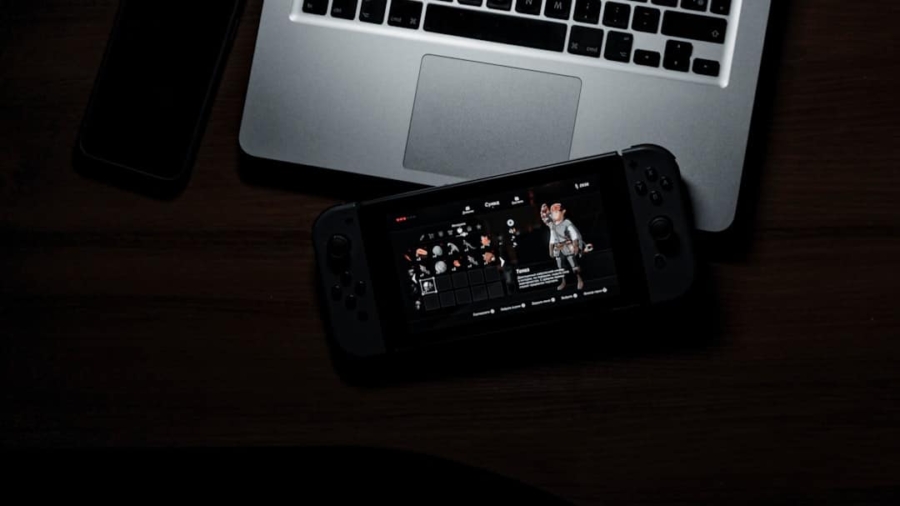The ascent of mobile esports has been nothing short of remarkable, transforming the landscape of competitive gaming in a relatively short span. With the proliferation of smartphones and tablets, gaming has become more accessible than ever, allowing millions of players to engage in competitive play from virtually anywhere. Titles such as “PUBG Mobile,” “Call of Duty: Mobile,” and “League of Legends: Wild Rift” have not only captured the attention of casual gamers but have also established themselves as serious contenders in the esports arena.
The convenience of mobile gaming, combined with the high-quality graphics and gameplay mechanics that modern devices can offer, has led to a surge in both player participation and viewership. This rise can be attributed to several factors, including the increasing affordability of mobile devices and the widespread availability of high-speed internet. As 5G technology rolls out globally, the latency issues that once plagued mobile gaming are being addressed, allowing for smoother gameplay experiences.
Furthermore, mobile esports tournaments have gained traction, with platforms like ESL and Garena organizing events that attract both amateur and professional players. The ability to compete in tournaments without the need for expensive gaming rigs has democratized esports, enabling a diverse range of participants to showcase their skills on a global stage.
Key Takeaways
- Mobile esports has seen a significant rise in popularity, with more players and viewers participating in competitive gaming on mobile devices.
- The impact of mobile esports on the gaming industry has been substantial, leading to increased investment, innovation, and the development of new gaming technologies.
- Competitive ecosystems in mobile esports have evolved to include organized leagues, tournaments, and professional teams, creating opportunities for players to compete at a high level.
- Mobile esports plays a crucial role in cultivating professional players, providing a platform for talent development and career opportunities in the gaming industry.
- The influence of mobile esports on sponsorship and brand partnerships has grown, with companies recognizing the potential for reaching a large and engaged audience through mobile gaming events and competitions.
The Impact of Mobile Esports on the Gaming Industry
Mobile esports have significantly influenced the broader gaming industry, reshaping how developers approach game design and monetization strategies. Traditionally, console and PC games dominated the competitive gaming scene, but the success of mobile titles has prompted developers to invest heavily in mobile platforms. This shift is evident in the increasing number of games designed specifically for mobile esports, which prioritize competitive balance, accessibility, and engaging gameplay mechanics.
Developers are now more inclined to create titles that can seamlessly transition from casual play to competitive environments, ensuring that they cater to both casual gamers and aspiring professionals. Moreover, the financial implications of mobile esports are profound. The revenue generated from in-game purchases, sponsorships, and advertising has skyrocketed as more players engage with mobile titles.
According to Newzoo’s Global Esports Market Report, mobile esports revenue is projected to reach over $1 billion by 2023. This influx of capital has led to increased investment in game development and marketing, further fueling the growth of the industry. As a result, traditional gaming companies are now competing with mobile-first developers, leading to a more dynamic and innovative gaming ecosystem.
The Development of Competitive Ecosystems in Mobile Esports

The establishment of competitive ecosystems within mobile esports is a testament to its growing legitimacy as a form of professional competition. Various organizations and leagues have emerged to provide structure and support for competitive play. For instance, the Mobile Legends: Bang Bang Professional League (MPL) has become a cornerstone for competitive play in Southeast Asia, offering a structured format for teams to compete at various levels.
These leagues not only provide a platform for players to showcase their skills but also foster community engagement through fan interactions and local events. In addition to formal leagues, grassroots tournaments have proliferated, allowing aspiring players to gain experience and exposure. Platforms like Battlefy and Toornament facilitate these competitions by providing tools for tournament organization and management.
This grassroots movement is crucial for nurturing talent, as it allows players to compete against others at their skill level while gaining valuable experience in high-pressure situations. As these ecosystems continue to develop, they create pathways for players to transition from amateur status to professional careers in esports.
The Role of Mobile Esports in Cultivating Professional Players
Mobile esports serve as a vital breeding ground for professional players, offering unique opportunities for skill development and career advancement. Unlike traditional sports or even PC esports, where access to training facilities and coaching can be limited by geography or financial constraints, mobile esports allow players to practice and compete from virtually anywhere. This accessibility means that talent can emerge from unexpected places, breaking down barriers that might have previously hindered aspiring professionals.
Training regimens for mobile esports players often include a combination of solo practice, team scrimmages, and analysis of gameplay footage. Many successful teams employ coaches who specialize in strategy development and player performance analysis. For example, teams like Nova Esports have invested in coaching staff who focus on optimizing player performance through data analysis and strategic planning.
This level of professionalism not only enhances individual player skills but also elevates the overall quality of competition within mobile esports.
The Influence of Mobile Esports on Sponsorship and Brand Partnerships
The rapid growth of mobile esports has attracted significant attention from brands seeking to capitalize on this burgeoning market. Sponsorship deals have become increasingly common as companies recognize the potential for reaching a diverse audience through mobile gaming. Brands ranging from tech giants like Samsung and Razer to beverage companies like Red Bull have entered into partnerships with mobile esports teams and tournaments.
These collaborations often involve product placements, promotional events, and co-branded content that resonate with the gaming community. Moreover, the demographic appeal of mobile esports is particularly attractive to sponsors. With a younger audience that is highly engaged with digital content, brands can leverage mobile esports to enhance their visibility and connect with potential customers in innovative ways.
For instance, during major tournaments like the PUBG Mobile Global Championship, brands often create interactive experiences that allow fans to engage with their products while enjoying the competition. This synergy between brands and mobile esports not only boosts brand awareness but also fosters a sense of community among fans.
The Global Reach of Mobile Esports Tournaments and Events

Mobile esports tournaments have transcended geographical boundaries, creating a truly global phenomenon that unites players and fans from diverse backgrounds. Major events such as the Free Fire World Series and the Arena of Valor International Championship attract participants from various regions, showcasing talent on an international stage. These tournaments not only highlight regional rivalries but also promote cultural exchange as players from different countries come together to compete.
The accessibility of mobile devices plays a crucial role in this global reach. Unlike traditional esports events that may require expensive setups or travel arrangements for participants, mobile tournaments can be accessed by anyone with a smartphone and an internet connection. This inclusivity has led to an explosion of interest in regions such as Southeast Asia, Latin America, and Africa, where mobile gaming is often more prevalent than console or PC gaming.
The Future of Mobile Esports and Its Potential for Growth
Looking ahead, the future of mobile esports appears bright, with numerous opportunities for expansion and innovation on the horizon. As technology continues to advance—particularly with improvements in mobile hardware and software—developers will be able to create even more immersive gaming experiences that push the boundaries of what is possible on mobile devices. Enhanced graphics capabilities, augmented reality features, and improved user interfaces will likely attract new players while retaining existing ones.
Furthermore, as more traditional sports organizations recognize the potential of mobile esports, we may see increased collaboration between these entities and established esports leagues. This could lead to hybrid events that combine elements of traditional sports with mobile gaming competitions, further blurring the lines between different forms of entertainment. Additionally, educational institutions are beginning to embrace mobile esports as part of their curricula, offering scholarships and programs that support aspiring players in their pursuit of professional careers.
The Challenges and Opportunities in Mobile Esports Ecosystems
Despite its rapid growth, the mobile esports ecosystem faces several challenges that must be addressed for it to reach its full potential. One significant issue is the fragmentation of platforms and titles within the mobile gaming space. With numerous games vying for attention, it can be challenging for players and fans to navigate the landscape effectively.
This fragmentation can dilute viewership numbers and make it difficult for sponsors to identify which games or tournaments offer the best return on investment. Additionally, issues related to cheating and fair play continue to plague the mobile esports scene. As competitive play intensifies, so does the temptation for some players to resort to unethical practices in order to gain an advantage.
Developers must invest in robust anti-cheat systems and community reporting mechanisms to maintain integrity within competitions. Addressing these challenges will be crucial for fostering a sustainable environment where talent can thrive. However, these challenges also present opportunities for innovation within the industry.
Developers can leverage emerging technologies such as blockchain for secure player verification or implement advanced analytics tools to enhance gameplay experiences. Furthermore, as more players enter the scene, there is potential for new business models that cater specifically to mobile esports audiences—such as subscription services or exclusive content offerings—that could reshape how fans engage with their favorite games.
As technology evolves and interest continues to surge globally, mobile esports are poised not only to redefine competitive gaming but also to create lasting impacts across various sectors within the entertainment industry.
In the rapidly evolving world of mobile esports, the development of competitive ecosystems is crucial for sustaining growth and engagement. A related article that delves into the technological advancements supporting these ecosystems is “Unlock a New World of Possibilities with Samsung Galaxy Z Fold4.” This piece explores how cutting-edge devices like the Samsung Galaxy Z Fold4 are enhancing the gaming experience by offering superior performance and innovative features. These advancements are instrumental in building robust platforms for mobile esports, allowing players to compete at higher levels and engage more deeply with their games. For more insights, you can read the full article here.
FAQs
What are mobile esports?
Mobile esports are competitive video game tournaments and leagues that are played on mobile devices such as smartphones and tablets. These competitions involve players competing against each other in popular mobile games for prizes and recognition.
How are mobile esports building competitive ecosystems?
Mobile esports are building competitive ecosystems by providing a platform for players to showcase their skills, compete in tournaments, and earn recognition and rewards. These competitions also attract sponsors, investors, and game developers, which helps to grow the overall mobile esports industry.
What are some popular mobile esports games?
Some popular mobile esports games include PUBG Mobile, Call of Duty: Mobile, Clash Royale, Arena of Valor, and Mobile Legends: Bang Bang. These games have a large player base and are frequently featured in mobile esports tournaments and leagues.
How do mobile esports tournaments work?
Mobile esports tournaments typically involve players or teams competing in a series of matches or games, with the goal of advancing through the tournament brackets to reach the finals. Tournaments may be organized by game developers, esports organizations, or third-party organizers, and often feature prize pools for top-performing players or teams.
What are the benefits of participating in mobile esports?
Participating in mobile esports can provide players with opportunities to showcase their skills, compete at a high level, earn prize money, and potentially attract sponsorships or professional opportunities. Additionally, mobile esports can help to build a sense of community and camaraderie among players who share a passion for competitive gaming.

